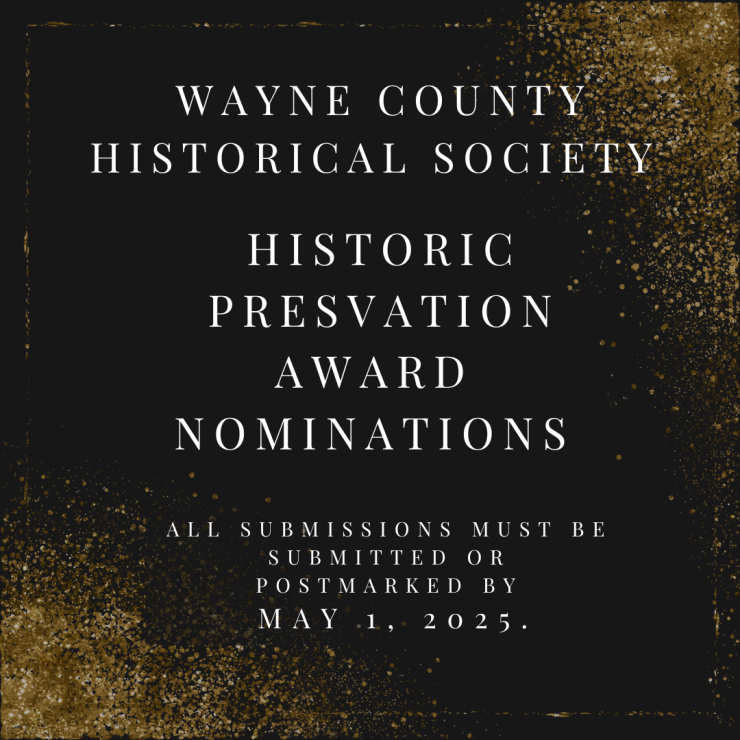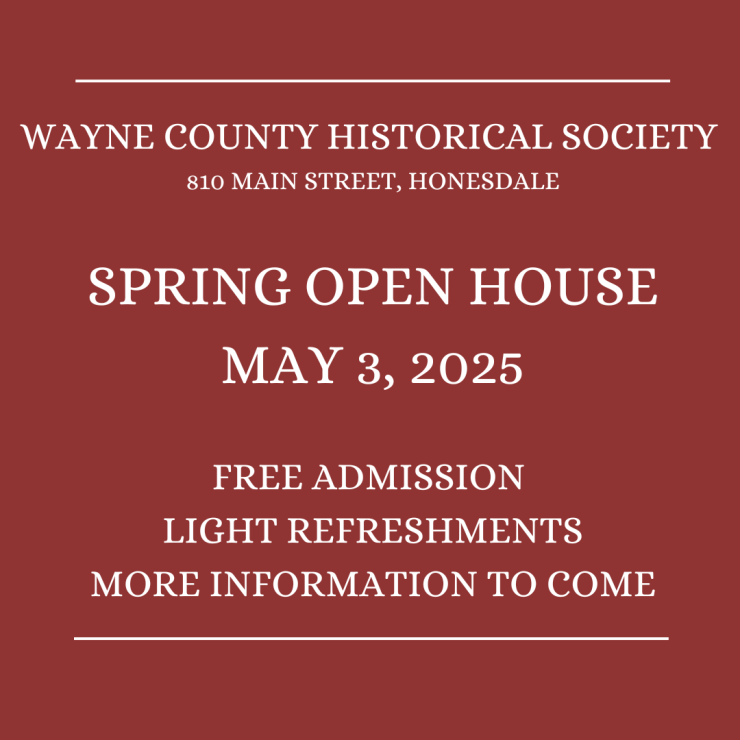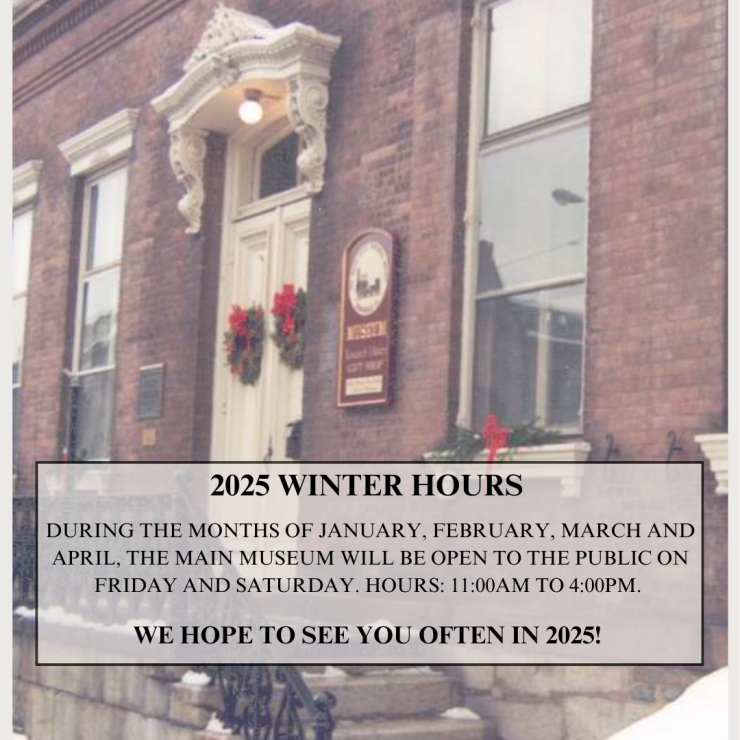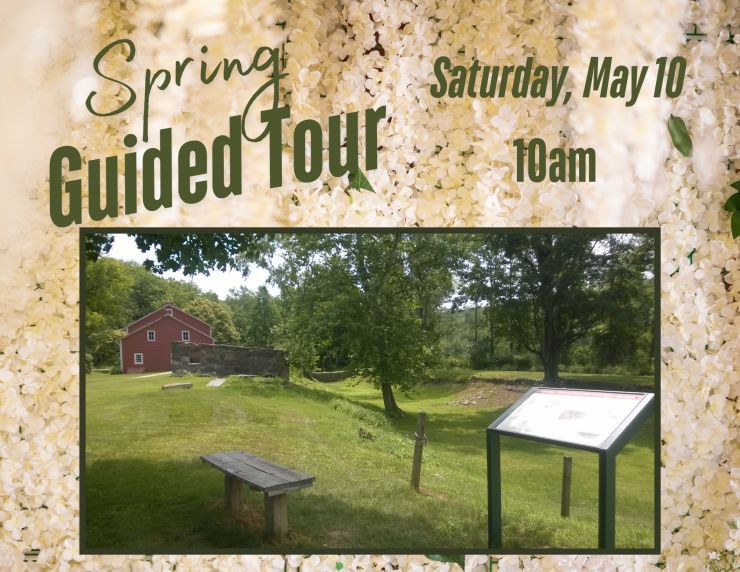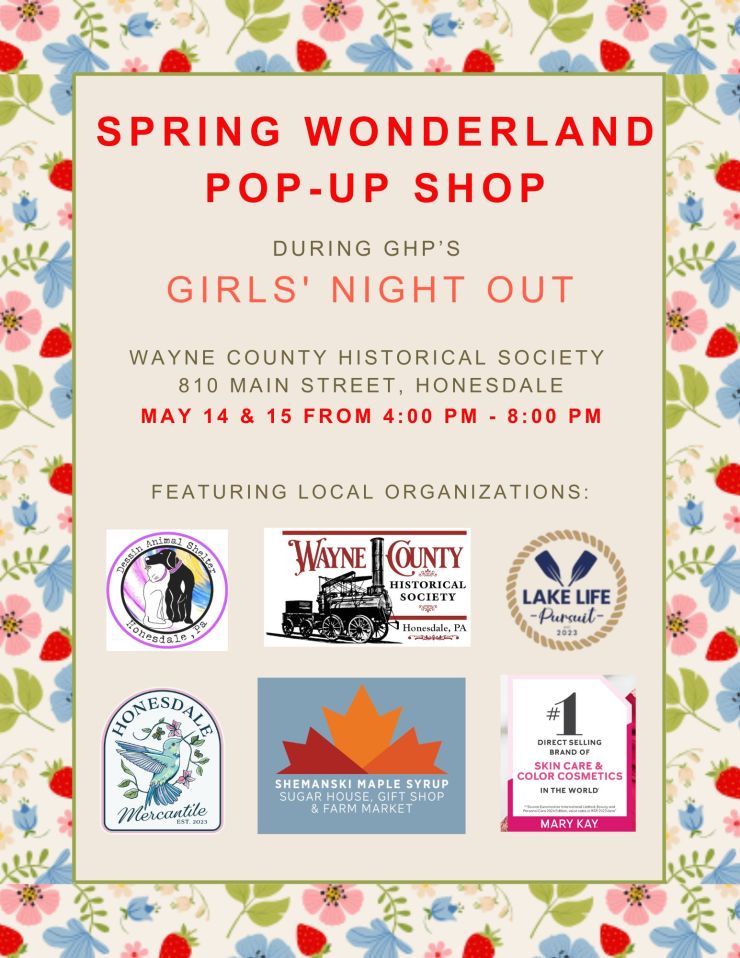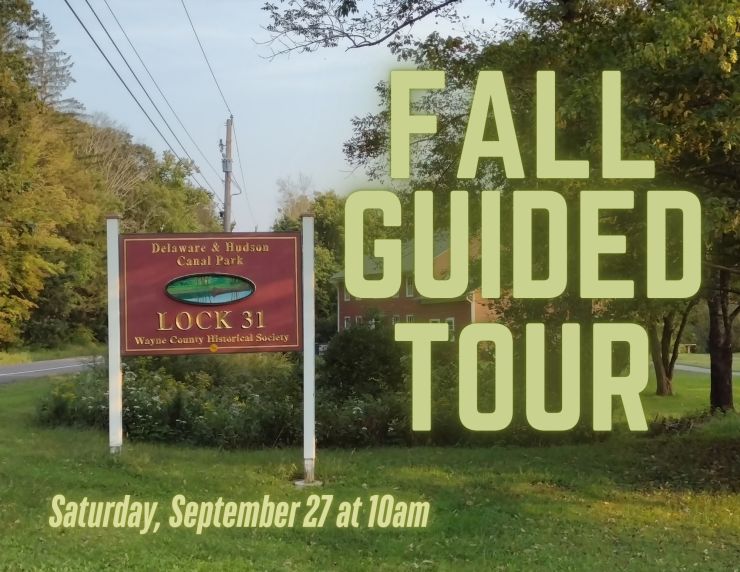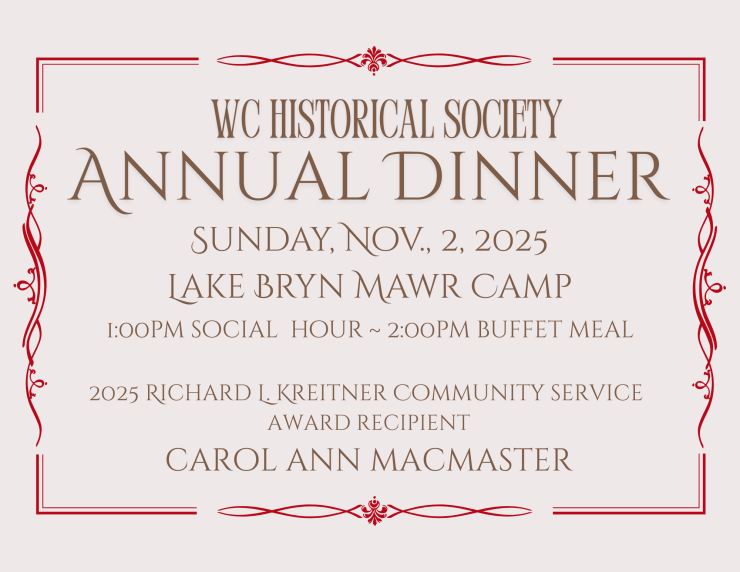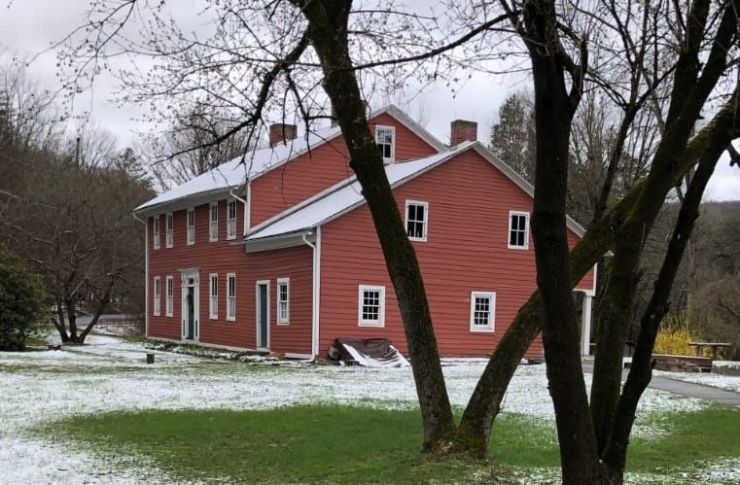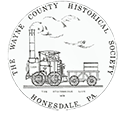Dreher Township
Dreher Township was taken from a portion of Sterling Township on September 7, 1877 and was reduced in size with the establishment of Lehigh Township in 1883. It was named after Judge Samuel S. Dreher who was at one time the presiding judge of the Twenty-second Judicial District of Pennsylvania. The township’s early history was closely linked with Greene Township of Pike County.
The first white man to settle in the area is said to be Denman Coe, a Yankee schoolteacher, who had first settled in the Paupack Settlement about 1794. He and his family led a very primitive existence. He hunted and trapped and sold about $200 or $300 worth of furs in Connecticut each year. He was soon joined by William Akers, Jr. of Stroudsburg; Phineas Howe of Massachusetts and Andrew Corey of Connecticut.
There are two rather romantic, but perhaps apocryphal, versions of the circumstances regarding the marriage of William Akers, Jr. and Polly, the daughter of Denman Coe. According to William Akers, Jr., while roaming in the wilderness he came upon the isolated farm of Denman Coe. Since Coe lived a long distance from any mill his grain had to be ground with a pestle and mortar. On this particular day Polly was weeping as she worked at this arduous task. She explained the reason for her tears to Akers who took pity on the young girl and soon after took her to Stroudsburg where they were married.
Many years later, Rebecca Kayser, the daughter of William and Polly offered another version of the story. Rebecca claimed her grandfather was a stern man who would have vehemently objected to the match and would have run Akers from his cabin for proposing such a union. According to Rebecca, Polly had remained in Connecticut for five years after her father came to Pennsylvania. At the age of fourteen she accompanied her father on foot from Connecticut as he returned from selling furs. He placed her in a weaver’s establishment in Stroudsburg, probably that of William Akers, Sr. It was there, at the tender age of sixteen, that she married William Akers, Jr., much to the displeasure of Denman Coe. Their son, John Clements Akers, born in 1805, was the first white child born in what became Dreher Township.
Robert Bortree, Sr., “an open-handed, free -hearted Irishman” with a rich Irish brogue, came to Dreher Township in 1806. He built a grist-mill on Bortree Creek in 1812. He was a deeply religious man who frequently admonished his wife, who did not share his religious fervor, to follow a more spiritual path. She ignored his efforts until one day when a terrible wind storm arose. She feared the world was coming to an end and pleaded with him to pray for her. He replied, “Indeed I won’t; this is what I have been telling you for these forty years, and now that the devil has come, it is too late!” Their children were William, John, Edward, Thomas and Robert. In 1812 John sold merchandise from his home and by 1818 William had a store in his house.
In 1828 twenty-two German families emigrated from Gundlesheim and Weingarden and settled in Easton, Pennsylvania. In 1829 many of these German Lutheran families came to Dreher Township and settled is what they called Dutch Flats. This parcel of 1,900 acres of flat land had been named Newfoundland by Daniel Stroud who had been told by hunters of a tract of land where there were no marked trees. The German settlement consisted of tradesmen such as coopers, millers, tailors, shoemakers and carpenters. Most of them were musical. Although they were Lutheran, the Moravians at Bethlehem loaned money, bought fifty acres of land for the minister and helped them build a church in 1840. This act of kindness by the Moravians moved the settlers to adopt that faith. A new church was constructed in 1853.
The East Sterling Protestant Methodist Church was dedicated on November 18, 1855. The first members of the church were William, Edward, John and Robert Bortree along with John R. Gilpin. The Albright or Evangelical Church was built about 1854 and the first preacher was Rev. William Mines. The South Sterling Methodist Episcopal Church was dedicated January 1, 1857 and Rev. Benjamin Kellam, Elder Dobell and Rev. Mr. Purdy were among the first preachers.
Dr. Fletcher Gilpin was the first resident physician in the township. The first school was built by Captain Phineas Howe in 1812 with Nancy Bennett the first teacher. The first post office was established at South Sterling in 1839 with Richard Gilpin appointed as the first postmaster. Jeremiah Bennett was the first hotel- keeper in South Sterling. William Lancaster, an Englishman and carpenter by trade arrived in Dreher Township with his son, Richard, a jeweler, in 1819. Richard was appointed Justice of the Peace in 1823 and held that position until 1840 when he was elected sheriff.
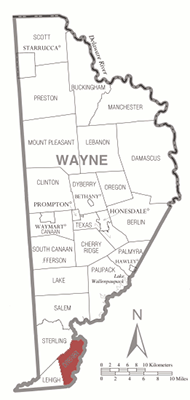
Navigation
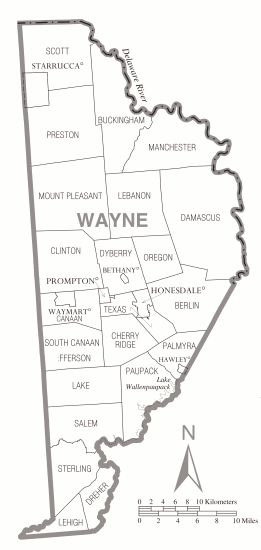
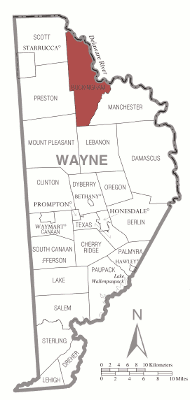
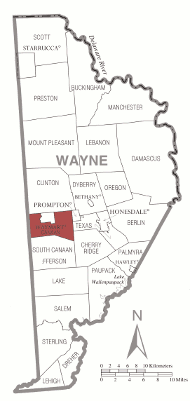
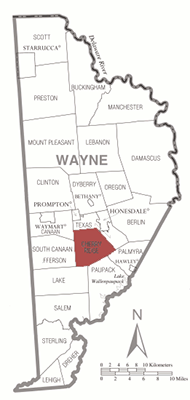
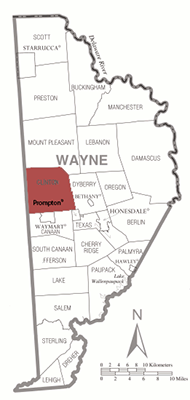
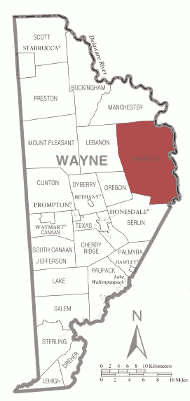

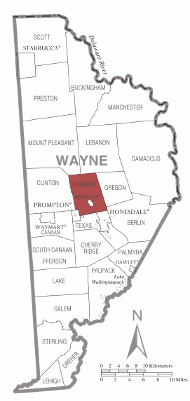
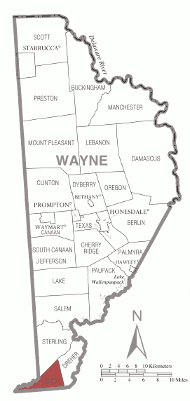

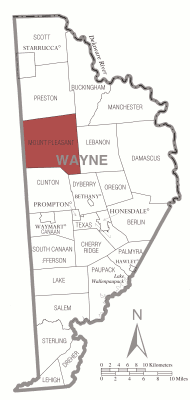
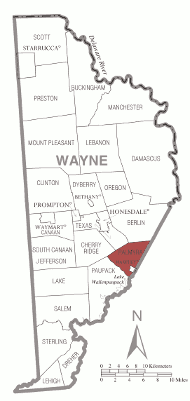
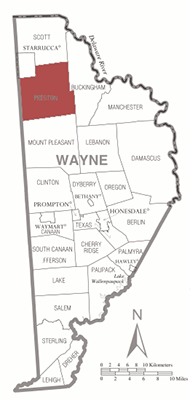


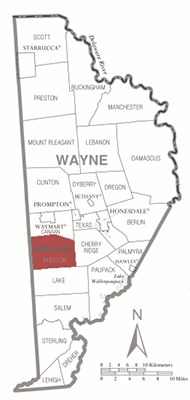
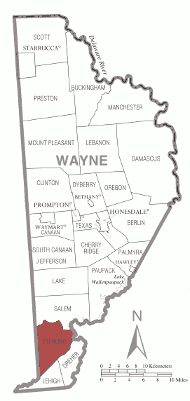
News and Events
